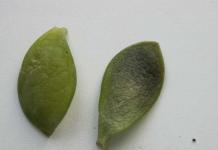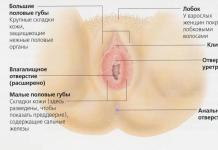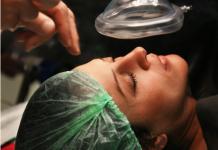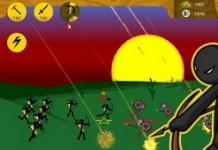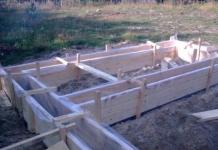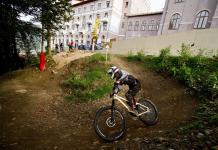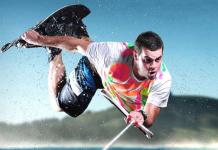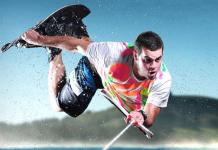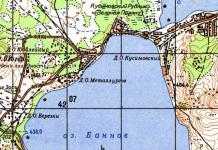Osteotomy is a surgical operation during which the anatomically correct position and / or shape of the bone is restored, due to which the supporting and motor functions of the musculoskeletal system are normalized.
How is an osteotomy performed?
At its core, an osteotomy is an artificial fracture that is performed in a strictly defined area of the bone.
Depending on the characteristics of each specific situation, such an operation can be performed on a bone freed from soft tissues (open osteotomy) or in a less traumatic way - without excision of the skin and muscles (closed osteotomy). The first method remains preferable for most artificial fractures, as it provides a higher accuracy of all manipulations of the surgeon.
In order to make a fracture along the required line and prevent the formation of fragments, the operated bone is pre-drilled in several places. Such preparation makes it possible to make the direction and location of the fracture controlled - corresponding to the purpose of the operation.
After the fracture, the surgeon models the bone fragments, arranging them in the required way, and then fixes them in the desired position with special structures - screws, wires, plates or other orthopedic devices.
Osteotomy is performed with the use of anesthesia, but the choice of a specific method of anesthesia (local anesthesia or general anesthesia) remains with the doctor.
When is an osteotomy indicated?
- incorrect bone fusion after a fracture - a situation that is not uncommon for fractures left without qualified treatment or after repeated injuries;
- impaired mobility or complete immobility of the joint due to degenerative, inflammatory, autoimmune diseases or traumatic injuries;
- bone deformity due to rickets, poliomyelitis or prolonged immobility of the patient, which is caused by muscle paralysis;
- congenital or acquired lameness caused by a difference in leg length;
- deformity and loss of joint mobility, which was the result of deforming osteoarthritis.
An operation to lengthen the bones of the lower extremities can also be performed not for medical reasons, but at the request of a patient who experiences psychological discomfort due to too short legs.
Classification of osteotomy
In addition to the difference between open and closed osteotomy, this orthopedic operation is classified according to the direction of the bone fracture, as well as to the intended purpose:
 The direction of the artificial fracture can be:
The direction of the artificial fracture can be:
- linear (oblique or transverse);
- stepped (staircase);
- Z-shaped;
- hinged (wedge-shaped, arcuate, spherical, angular).
The direction of the fracture is calculated in advance, and preference is given to the one that provides the maximum efficiency of the operation with minimal trauma.
According to the intended purpose in osteotomy, several varieties are distinguished:
- Corrective. This type of osteotomy is designed to correct bone deformities resulting from malunion of a traumatic fracture, past rickets, and other conditions that cause abnormal bone formation or fusion.
- Derotational. With such an osteotomy, the surgeon eliminates the pathological mobility of the bone, which rotates around its axis. The operation is most often performed on the femur and ulna, which most often develop pathological rotation caused by bone curvature.
- Bone length correction. It is carried out in order to lengthen/shorten one or both limbs (arms and legs) in order to eliminate lameness, and in case of asymmetry of the arms, to restore the ability to self-service and perform professional skills.
- Reconstructive. It is performed to improve or restore the supporting function of a bone or joint.
Depending on the area of the bone in which the curvature is observed, on the degree of deformation and other factors, a combined osteotomy can be performed, which combines several types of surgery. Thus, in some cases, improving the support function of the lower extremities may require the removal of a deformed area of the bone, followed by limb lengthening.
Contraindications for osteotomy
Circumstances in which osteotomy is contraindicated are:
- severe disorders of the heart and / or lungs;
- blood clotting disorders;
- systemic infectious diseases;
- vascular disease, circulatory failure;
- circumstances of any nature that make it impossible to properly pass the recovery period.
 On an individual basis, the decision to prescribe an osteotomy is made in the following cases:
On an individual basis, the decision to prescribe an osteotomy is made in the following cases:
- the patient's age is less than 14 or more than 60 years;
- the patient has low bone density and/or impaired growth of the bone matrix (osteoporosis, osteomalacia);
- underweight or overweight of the patient;
- significant violations of posture (scoliosis, kyphosis, hyperlordosis).
In each of these situations, the doctor focuses on the advisability of surgical intervention, and only after weighing the risks and benefits for the patient makes a decision on the need for surgery or on choosing another method of treatment/correction.
Preparatory stage
Before the appointment and operation, the patient is assigned a comprehensive examination, which includes:

In addition, when setting the exact date of the operation, the patient is given a list of recommendations for the preparatory stage. Among them are the cessation of taking medications containing aspirin and heparin, the refusal to consume alcoholic beverages and smoking, etc. 12-16 hours before the osteotomy, it is necessary to stop eating and drinking.
Important: during the consultation, it is necessary to inform the doctor about any features of the state of health, even if they seem unimportant. Any diseases of the heart, liver, respiratory organs, transferred in the past, may require correction of prescriptions and affect the choice of the preferred method of pain relief.
Recovery period after surgery
Rehabilitation after surgery can last from 1 month to six months, and its duration depends on the degree of complexity of the operation, the individual characteristics of the patient's health status and the intensity of the formation of new bone tissue.
Most often, fixing devices installed during osteosynthesis (fixation of bone fragments) become sufficient to avoid wearing plaster casts. Such a bandage can be applied for the first few days after the operation, after which it is removed. The exception is complex cases of osteotomy, in which multiple fractures were made in a relatively small area of the bone. In this situation, it may be necessary to wear a cast for several weeks or months.
 Also, when elongating the limbs, the patient requires skeletal traction or wearing an orthopedic apparatus. In the first case, the operated limb with a load suspended from it is placed on a special tripod. The size of the load and the duration of traction is assigned individually.
Also, when elongating the limbs, the patient requires skeletal traction or wearing an orthopedic apparatus. In the first case, the operated limb with a load suspended from it is placed on a special tripod. The size of the load and the duration of traction is assigned individually.
Wearing orthopedic appliances allows gradual and controlled adjustment of the force applied to the operated bone. The advantage of this method is the ability of the patient to move independently a few days after the operation. This, in turn, reduces the health risks associated with prolonged bed rest (congestion, atrophic processes in the muscles, etc.).
Complications after surgery
Surgical errors account for only a small proportion of complications (according to various estimates, from 1.2% to 3% of the total number of negative consequences). In all other cases, complications develop due to non-compliance with the recommendations in the recovery period, or become a consequence of self-correction of doctor's prescriptions or their complete disregard.
The most common unwanted effects are:
- improper fusion of bone fragments, which in most cases occurs when the loads on the operated area are exceeded;
- hematomas;
- not complete, but only partial restoration of the functions of the musculoskeletal system.
To minimize the likelihood of complications in the early postoperative period, drug treatment is prescribed, and in the later period - physiotherapy, massage, exercise therapy, spa treatment, etc.
A procedure such as osteotomy of the knee joint is one of the most sparing forms of surgical intervention in the structure of bone and cartilage tissue. The operation is performed by affecting the tibia or femur in order to reduce pressure on the knee joint. As a rule, it is carried out in the early stages of osteoarthritis and helps to reduce the severity of pain, restore normal mobility of the lower limb.
Indications and contraindications
Basically, corrective osteotomy is used to normalize the motor activity of a patient with deformation and degenerative-dystrophic changes in bone and cartilage tissue. The procedure itself is considered non-traumatic and bloodless, since an incision of no more than one centimeter is made for its implementation.
The main indications for the operation include degenerative changes in the cartilage, which provoke a violation of the axis of the lower limb. This pathological condition occurs due to injuries of soft tissues, ligaments and meniscus. Congenital anomalies of the limbs, the progression of gonarthrosis, and incompletely cured injuries of the knee joint are capable of provoking dystrophic disorders. Osteotomy is performed for disorders that develop against the background of rickets and bone tissue dystrophy.
With special care, osteotomy of the knee joint is performed in the presence of the following pathological conditions:

Preparation for the procedure
Preparatory measures begin with the diagnosis of the patient. The attending physician collects an anamnesis of complaints, a medical history and conducts an external examination of the joint. X-ray and MRI of the affected area are mandatory. Thanks to the data obtained, the orthopedist determines all structural changes in the joint cavity and draws up a plan for restorative measures after surgery. A week before the scheduled procedure, most medications are stopped. Alcohol and smoking are prohibited 14 days prior to knee osteotomy. People with injuries and erosions of the skin are not allowed to operate. In the presence of chronic diseases, it is important to bring them into remission before intervention.
How is it carried out?
Surgical intervention is carried out based on the individual characteristics of the patient's body and the degree of damage to the knee. There is a standard sequence of actions:
 When performing an operation, the doctor takes into account the characteristics of the pathology of a single patient.
When performing an operation, the doctor takes into account the characteristics of the pathology of a single patient. - An incision is made in the skin. After that, their edges are moved apart to the required indicators.
- An artificial graft or a previously prepared part of the patient's femur is inserted into the incision. All parameters are determined by computer calculations.
- A metal plate is placed to hold the bone fragment. For maximum fixation, knitting needles are used.
- The whole procedure is carried out under the control of an x-ray machine. This is necessary for making a fracture in the bone and correct insertion of the plate.
If the surgical intervention is carried out successfully, then the integrity of the patella is completely preserved and the patella tendons are not injured. At the same time, partial restoration of cartilage and a decrease in pain syndrome are noted, by normalizing the process of blood supply and eliminating congestion.
Osteotomy is an operation that is performed to cut the bone, which helps to cure certain diseases, both congenital and acquired. Speaking more generally, it is aimed at breaking the bone, after which measures are taken for its further, correct, fusion.
Main types
This method of surgical intervention is used under general anesthesia, and only on the bones of the lower or upper extremities. Today it is customary to distinguish between such types of osteotomy as:
- Transverse.
- Z - figurative (scarf-osteotomy)
- oblique
- Staircase.
- Angular
- Arcuate.
- wedge-shaped.
The operation can be performed by closed or open method. In the first case, a small incision is made on the skin - no more than 2 cm long, after which the bone is blindly crossed with a chisel. Moreover, you need to work with a chisel very carefully, and at the very end, when the bones are connected to each other by a small bridge, just break them. This is done to avoid damage to vessels and nerves that may be located deeper than the level of the proposed fracture.
This type is used extremely rarely and in most cases an open osteotomy is used, where everything is done under the strict visual control of the surgeon.
Operation goals
Corrective osteotomy of the knee joint is a very effective operation that helps patients get rid of such a serious pathology as deforming arthrosis. At the same time, it is quite realistic to delay the installation of an artificial joint for a long time, which can be from 5 to 10 years, and sometimes longer.
The meaning of the procedure lies in the artificial fracture of the lower leg and its subsequent connection with plates. As a result, defects that previously prevented patients from leading an active lifestyle are corrected, and after the complete healing of such a fracture, they can again play football, ski, and engage in active sports. At the same time, pain and deformity of the joint disappear for a long time.
Corrective osteotomy can be used for almost any bone of the extremities, whether it be the lower leg, thigh, foot bones, and even fingers.

Contraindications and indications
There are some diseases when such surgical intervention is strictly contraindicated. These include:
- Patello-femoral arthrosis of the 3rd degree.
- Arthrosis of the contralateral joint.
- Obesity.
- extra-articular deformities.
- Decreased bone regeneration.
- The presence of an infectious process.
As for the indications, everything here is strictly individual and everything depends not only on the existing diseases, but also on the patient's age, body weight, and the presence of other pathologies.
For example, an osteotomy of the knee joint can be performed provided that the person is not yet 60 years old. If this age is exceeded, then the issue is resolved strictly individually. Also, the main indications for this surgical intervention include:
- 2 degrees.
- Absence of patellofemoral arthrosis.
- The presence of valgus or varus no more than 15 degrees of curvature.
- Isolated arthrosis of 2-3 degrees.
- Full knee extension.
- Intact cruciate ligaments.
- Intact menisci of the knee joint.
Preparation and rehabilitation
Corrective osteotomy of the tibia or knee requires careful preparation from both the patient and the clinician.
The patient must undergo a complete examination, which includes blood and urine tests, a biochemical blood test, a blood sugar test, an X-ray examination of not only a possible site of an artificial fracture, but of the entire limb, a fluorographic examination of the lungs, a study for infections such as AIDS, syphilis, hepatitis.
As a rule, the operation is carried out according to plan, the patient can take all the necessary tests at the nearest clinic. On the appointed day, the patient is admitted to the hospital. The length of stay in the clinic after surgery is no more than 5 days. Outpatient rehabilitation can last 4 weeks or more. As for disability, this is decided strictly individually and usually this period is from 2 to 6 weeks. But here it all depends on the place of the osteotomy - foot, knee or thigh.
As for rehabilitation, electromuscular stimulators, magnetotherapy and lymphatic drainage can be used here. It is obligatory to wear an orthosis, which ensures the immobility of the operated bone.
It is necessary at first not to treat, but to remove the cause of the occurrence. The reason may be not enough trace elements, vitamins in the body. If the body does not receive vitamins and microelements in the right amount, there is a reason for the development of diseases. I do not urge you to run to the pharmacy and buy vitamins that are obtained synthetically, which will bring practically no effect. If you are smart, you will understand where to get vitamins and trace elements of natural origin.
How is a knee osteotomy performed?
Preparation for the procedure
In addition, various physiotherapeutic procedures play an important role in the treatment - electrophoresis, phonophoresis with hydrocortisone, ultraviolet irradiation, laser and magnetotherapy. The use of the full range of these procedures will normalize the metabolic processes in the joint and improve the nutrition of the cartilage, which will help reduce pain, improve the motor function of the joint, prevent the development of contracture of the knee joint and slow down the further development of the disease.
- Today, such an operation is considered a high-tech and at the same time simple method. In medicine, it is valued for helping to delay arthroplasty for many years (more than 10 years). It is a preparatory stage before arthroplasty.
Computed tomography shows minimal changes in the tissues of the knee joint. Based on the data obtained, the orthopedist accurately models the future postoperative result. An idea is formed about the level of deformation of the axial lines and the ratio of the reference angles of the lower extremities.
- The main goal of an osteotomy on the knee joint is, by correcting the axis of the limb, to redistribute the load from the damaged area to a relatively healthy one.
- The process of preparation for this operation consists in an extensive radiograph, during which the orthopedic surgeon receives images of the area that can be corrected from different angles. Thus, he chooses the optimal tactics for conducting the operation.
Anesthesia
During this procedure, an artificial fracture is first performed, and then a special plate is installed. The incision is sutured cosmetically. Thanks to the use of ultra-modern fixators, plaster is not applied after the procedure is completed.
- Redness, swelling, increased pain, bleeding, or discharge from the incision;
- Take prescribed pain medication;
Description of the Knee Osteotomy Procedure
You will be in the recovery room for several hours. Hospital staff will monitor vital signs. You may be given pain medication.
You need to discuss these risks with your doctor.
Immediately after knee osteotomy
An important part of conservative therapy is a course of massage and physiotherapy exercises, which are designed to strengthen the muscles of the knee and restore normal blood circulation in the joint area.
How long does a knee osteotomy take?
Knee osteotomy - will it hurt?
An innovative method is in demand among patients who lead an active lifestyle and want to quickly return to a healthy shape.
Average hospital stay after knee osteotomy
At the consultation with the doctor, the patient discusses the plan of the operation, its features and possible complications. The method of operation is determined in accordance with the following aspects: the level of bone excision (shin or thigh), the distance of the incision from the joint, the type and size of the fixing structure.
Care after knee osteotomy
Care in the hospital
First of all, the operation is prescribed for the destruction of the cartilage menisci in the knee joint. The degradation of cartilage tissue causes a displacement of the mechanical axis of the lower extremities by 10 mm from the middle. Therefore, the load on it increases when moving. Disproportionate and premature wear of the articular organ occurs.
- Those bone structures that undergo correction are artificially broken by an orthopedic surgeon during the operation, and then fixed at the right angle and in the required position. In order for the bones to grow together correctly, a special plate or other special means, such as knitting needles and bolts, are installed. Thanks to modern technologies and in order to avoid complications in the form of contractures in adjacent joints, gypsum is not applied.
- The osteotomy area fuses after about eight weeks. It is possible to subject the operated knee joint to a load only after twelve weeks. Before this period, serious loads on the knee are strictly contraindicated.
- Increased pain or swelling;
- Apply ice or a cold compress to the surgical area for 15-20 minutes four times a day. Wrap the ice in a towel, do not put it directly on the skin;
- The duration of the operation is 1-3 hours.
Prior to surgery, the doctor will order tests to confirm the diagnosis and determine how much bone needs to be removed. Tests may include:
home care
Unfortunately, conservative treatment of gonarthrosis of the knee joint can be effective only at the earliest stages of the development of the disease and plays the role of preventive treatment to a greater extent.
- A knee osteotomy is performed in cases where osteoarthritis has developed on only one side of the knee joint.
- Duration of stay in the clinic: 5 days
- Patients are gradually prepared for the surgical procedure. A week before treatment, they are forbidden to take certain medications (anti-inflammatory drugs, anticoagulants, antiplatelet agents, and others).
- Also, the procedure will be necessary for changes in the axial line of the limb, which are provoked by other diseases:
- Rehabilitation lasts depending on which part of the body the operation was performed on, for example, it requires 12 weeks of rehabilitation. Moreover, the bones grow together for the first two months, the rest of the time they acquire the necessary strength. During this period of time, loads on the operated part of the body are excluded.
- Before proceeding with the surgical intervention, the doctor should carefully examine the x-rays of the diseased knee joint. These pictures must be taken, of course, from different angles.
- Cough, shortness of breath, chest pain;
- Elevate your injured leg to reduce swelling
- Anesthesia prevents pain during surgery. After the operation, the doctor prescribes pain medication.
MRI - uses magnetic waves to take pictures of structures inside the body;
Communication with the doctor after knee osteotomy
Surgical treatment
- The purpose of this operation is to relieve pressure on the damaged parts of the cartilage by changing the axis of the leg. Osteotomy significantly postpones the need for knee arthroplasty.
- Outpatient rehabilitation: 4 weeks
- Modern surgery has developed several ways to perform knee correction. Each of them has technical features. But they all include general operational actions, without which this procedure is impossible:
- sprain of the ligaments of the knee joint;
- Corrective osteotomy is indicated for malunion of fractures. In addition, diseases such as:
- Thanks to this, it becomes possible to calculate the correction angle as accurately as possible, which is the most important indicator in corrective osteotomy.
- Severe nausea and vomiting;
- If a cast has been applied, follow your doctor's instructions for skin care;
- You may have to stay in the hospital for 2-3 days. The doctor can extend the stay if complications arise.
- CT (Computed Tomography) is a type of X-ray that uses a computer to take pictures of structures inside the body.
medicalhandbook.ru
Corrective osteotomy of the knee joint | Knee-joint
Corrective osteotomy of the knee joint
Tibial osteotomies are usually performed under general anesthesia. An incision is made on the inside or front of the knee to give access to the knee joint and lower leg. The joint is then examined. In order to align the axis of the tibia, it is cut at an angle, creating a wedge-shaped hole. This hole is filled with a bone graft, which is attached with a metal plate and screws. This helps keep the wedge in place. The incision is sutured, the knee and leg are placed in a splint.
Earliest flight home: 14 days after surgery
Features of corrective osteotomy
The necessary part of the bone is excised with special tools. Its edges are moved apart by a calculated distance.
development of arthrosis in the joint capsule or bone;
Preparing for the operation
Different types of arthrosis, including osteoarthritis and gonarthrosis;
Postpone the need to install an artificial joint for a few years. This is especially important for young people;
To give a corrective osteotomy
- Numbness, tingling, or loss of sensation in the leg, knee, or foot;
- Use crutches or a walker. Do not transfer weight to the affected leg until the doctor gives permission;
kneeny-sustav.ru
general information
During recovery in the hospital:
- A few days before surgery:
- The main operations performed to get rid of the problem of arthrosis are arthrodesis, corrective osteotomy and arthroplasty.
- Usually the patient stays for three nights in the clinic. The leg can be loaded with about half of the body weight already on the day of surgery. Full load is allowed, usually after about 4-6 weeks.
An artificial graft or a fragment taken from the pelvic bone of the patient's body is inserted into the resulting gap. Its dimensions are determined in advance using computer calculations.
The process of the procedure
Training
post-traumatic deformities of the lower extremities;
Corrective osteotomy procedure
ankylosis of bones;
rehabilitation period
Significantly improve the results of prosthetics.
Indications
Swelling, fever or pain in the lower leg;
- Keep the incision area clean and dry.
- The staff will provide you with pain medication;
- Talk to your doctor about your medications. You may be asked to stop taking certain medications a week before your procedure, such as anti-inflammatory drugs and blood thinners.
Arthrodesis is indicated for patients who are contraindicated for other types of surgical intervention and its main goal is to restore limb support and reduce pain. During the operation, the bones are fixed with the help of special devices (screws, plates, grafts). After such a fastening, the bones grow together, the leg support is restored, and this, despite the fact that motor restrictions remain, allows solving the problem of pain in deforming arthrosis of the knee joint.
Contraindications
Physiotherapy significantly speeds up the healing process.
Complications
Showering possible: 14 days after surgery
MedBooking.com
Corrective osteotomy of the knee joint
metal plates are placed on top. They must firmly hold the new bone connection. Threaded inserts work best with this function. For additional reinforcement, poles and knitting needles are used. Properly fixed design forms a stable angle during movements.
What is an osteotomy?
Violation of the healthy growth of the lower extremities due to various diseases (rickets, Blount's disease, Paget's disease, and others).
Rickets
Indications for knee osteotomy
Bones take on an irregular shape and position if professional care has not been provided after a fracture. The essence of this procedure is that the diseased bone is broken and then fixed with the help of special plates or other devices so that it grows together and takes its natural shape. Osteotomy is used to achieve the following goals:
Pain, burning, frequent urination, blood in the urine.
- Ask your doctor when it is safe to shower, bathe, or expose the surgical site to water;
- A soft bandage is applied to the incision site;
- Do not eat or drink anything the night before surgery.
- Osteotomy is an effective method of treating gonarthrosis, which allows not only to restore lost motor functions, but also to slow down the pathological process that develops in the joint. The essence of the operation is to cut the bone (or artificial fracture) and then fix it in a functionally correct position. This surgical intervention is aimed at uniform and more correct distribution of the load on the joint and, as a result, the normalization of intraosseous pressure, which will lead to a decrease, and, in some cases, the complete disappearance of painful sensations. Supportive conservative therapy after surgery will accelerate bone fusion, restore the functioning of the musculoskeletal system and finally get rid of the problem of arthrosis.
The main stages of surgical intervention
Gentle sports such as swimming or cycling can be started as early as four weeks. For other sports, you need to consult with your doctor.
Duration of inoperability: 2-6 weeks (depending on the type of activity)
The surgical process is carried out under X-ray control to determine how correctly the fracture is performed and the plates are fixed.
Preparatory stage
The effectiveness of corrective osteotomy depends on how correctly the diagnosis was carried out, the level and degree of correction were analyzed.
In addition, this operation is performed to delay the need to replace the joint with an artificial one, as well as to correct the prosthesis.
Return motor functions to the limbs, restore their performance;
Operations and procedures A - Z
After 6-8 weeks, you should start working with a physiotherapist. Therapy will focus on balance, range of motion and strength training;
Operational stage
Apply ice to reduce swelling at the surgical site;
- The following types of anesthesia may be used:
- Osteotomy is divided into closed and open. As a rule, a closed osteotomy is more correct, which is carried out through small incisions - this reduces the trauma of the operation and allows you to recover faster. In addition, after such an intervention, there are no ugly scars.
- Olya With an idiot argue...
- Suture removal: after 14 days
Professional performance of surgical intervention allows you to save the patella and patella tendons. In addition, it improves blood circulation in the knee area. It is possible to partially restructure the cartilage tissue and eliminate pain.
Postoperative stage
Operative actions are carried out by orthopedists or surgeons. Pay attention to the experience of a specialist.
Osteotomy is contraindicated in diseases of the kidneys and liver, with disorders of the cardiovascular system. It can not be carried out if the patient has an exacerbation of any chronic disease, as well as in acute diseases. You can not do an osteotomy for those who suffer from any diseases of a purulent nature.
In the practice of plastic surgery, osteotomy is used to lengthen the limbs;
Osteotomy of the knee - Osteotomy of the knee
Follow your doctor's instructions.
MedAnswer.com
Osteotomy of the knee - correction of the axis of the knee to preserve the joint | orthopedic-clinic.com
- You need to move your leg to improve blood circulation and reduce the risk of blood clots. The Continuous Passive Mobilization (CPM) apparatus can also be used for these purposes if the bone has been fixed with plates and screws. He independently moves the knee joint along a given trajectory.
- General anesthesia - blocks any pain and keeps the patient asleep during the operation. Introduced intravenously into the arm or hand.
- In the early stages of arthrosis, when the joint is not yet completely destroyed, the effect of the osteotomy performed can last for a long time.
- Conservative treatment
- Driving is possible: after 6 weeks
- The duration of rehabilitation depends on the patient's state of health and the quality of the installed fixators for the bone parts. The recovery period takes from 12 weeks to 1 year. Within 2 months, there is an active fusion of bones, filling all the gaps with new connective tissue. The rest of the time is devoted to acquiring structural strength.
- If the doctor does not collect all the necessary indications, surgical intervention will not give a therapeutic effect or will lead to accelerated destruction of the articular tissues.
- This surgery is complex and quite risky. Complications of the following kind may occur:
- restore support function.
You will need to go back to the doctor to have your cast removed or an X-ray of your joint taken. Full recovery may take six months.
You need to breathe deeply and cough 10-20 times every hour to reduce the risk of a lung infection.
Longer without endoprosthesis
Spinal or epidural anesthesia - blocks pain in the lower body, from the chest and below, the patient is conscious. It is administered by injection into the back.
Arthroplasty allows you to completely solve the problem of lost or limited motor functions of the knee joint. During the operation, new articular surfaces are modeled and a special pad is placed between them, which will replace the affected joint. This pad can be made from artificial materials or from the patient's own tissue.
In the early stages of a disease such as deforming arthrosis of the knee joint, treatment begins with conservative methods.
Osteotomy of the knee - surgery to correct the axis of the knee
When can I stand up?
Cost of knee osteotomy: 8.400 EUR
In the first days of recovery, a partial load is given to the operated limb.
It starts with a thorough examination of the patient. Laboratory and clinical testing is carried out. Doctors obtain the most important data using digital radiography and computed tomography.
orthopedic-clinic.com
How to treat osteoarthritis of the knee joint?
Recently, there has been an increase in the incidence of knee joints among people of working age and young people. Often such patients remain dissatisfied with conservative treatment. In this case, modern sparing operations, such as corrective osteotomy, will help you quickly return to your previous lifestyle.
Depending on the purpose of the procedure, the object of the osteotomy changes. Say, in order to return the support function, this procedure is performed on the hip joint.
Such a treatment method as corrective osteotomy is used for gonarthrosis. Gonarthrosis develops gradually and is a destruction or wear of the knee joint.
After discharge from the hospital, you should consult a doctor if the following symptoms appear:
You will also need to use crutches or a walker.
There are many techniques that can be used to perform a knee osteotomy.
If you have deforming arthrosis of the knee joint in an advanced stage of development, only total arthroplasty or arthroplasty can help.
Conservative treatment of deforming arthrosis of the knee joint primarily includes taking medications from various groups - painkillers and anti-inflammatory (non-hormonal) drugs, as well as drugs aimed at improving the nutrition of cartilage tissue and strengthening bone tissue.
Knee osteotomy - correction of the knee axis© Viewmedica
The level of normalization of the axis of the lower limb is checked. Getting used to the new position of the knee is completed on the 6th month of rehabilitation.
Digital radiography provides a detailed image of the axial pathology of the lower extremities.
Corrective osteotomy is a surgical intervention aimed at correcting the axis of the deformed parts of the musculoskeletal system by breaking them and then connecting them.
Corrective osteotomy is aimed specifically at restoring the position, shape and performance of the limbs after an illness or injury.
Over time, fluid begins to accumulate in the knee joint, a crunch and creak appears. Corrective osteotomy of the knee joint is used in advanced cases of gonarthrosis.
Signs of infection (eg, fever, chills);
When you get home, follow these steps to ensure a normal recovery:
In one method, the doctor uses imaging technology to measure the part of the bone that will be removed. An incision is made in the skin from the kneecap to the top of the tibia. Several thin wires are placed at the knee joint to serve as landmarks showing which bones need to be removed. The doctor uses a saw to remove the bone wedge. The rest of the bone is juxtaposed and held together with staples, pins, or plates with screws. At the end of the procedure, the doctor sews up the incision with stitches.
Corrective osteotomy is a surgical operation aimed at correcting the deformity of a bone or joint by means of an artificial fracture. The knee, ankle, hip and shoulder joints are subject to treatment in this way. In severe cases, a corrective osteotomy of the tibia is performed for deforming arthrosis. The operation on the lower extremities is performed in order to restore the physiological position of the legs when walking. Operation on the upper limbs is needed to ensure self-care and professional activities.
Bone cutting at an angle for alignmentThis treatment option is an alternative to arthroplasty and eliminates various deformities, restoring the function of the organ. Osteotomy can be performed on a child in case of improper union of the bone after a fracture or in the presence of congenital anomalies of the skeleton.
Corrective osteotomy is used to restore the function of the musculoskeletal system and eliminate the deformity of large joints. During the operation, a part of the bone is excised, it is given the correct shape, and reverse fixation is carried out with a special apparatus for osteosynthesis, as well as with the help of plates and screws. To align the upper and lower limbs, in some cases, they resort to shortening one of them. In this case, the excision of a certain bone fragment is carried out, followed by osteosynthesis.
After the operation, plaster bandages are applied. Sometimes they are replaced by knee pads with the ability to regulate the range of motion, which reduces the risk of contractures in the joints.
The need for corrective surgery arises in the following cases:
- improper union of supramalleolar fractures (corrective osteotomy in the shin area);
- valgization and (scarf technique shown);
- ankylosis of the hip joint;
- transferred poliomyelitis (correction of the subcondylar area);
- joint contracture;
- malunion of supracondylar fractures.
Indications for corrective osteotomy of the foot and the 1st metatarsal are impaired bone fusion and severe arthrosis.
Operation types
The following types of osteotomy are used:
- Z-shaped or scarf (with hallux valgus);
- wedge-shaped (correction of the axis of the phalanx of the finger);
- angular (excision of tissues at an angle to return the correct position);
- linear (alignment with a graft).
 Osteotomy of the calcaneus with flat feet
Osteotomy of the calcaneus with flat feet Depending on the access, the following two types of operation are distinguished:
- Option with the use of closed access. Allows you to correct the pathology through a 2 cm incision in the skin. The specialist works "blindly", so this treatment option requires increased caution and often leads to complications.
- Open access option. This type is used more often. The operation is performed through an incision in the skin up to 12 cm, which allows you to completely open the necessary area of the bone.
Quite often, the bones of the foot are corrected - the phalanx of the big right or left toe and the heel. This area has a large load during recovery after a fracture of the bones of the lower extremities, which is fraught with improper fusion. Surgical treatment is also prescribed for flat-valgus deformities with severe valgus, clubfoot, flat feet with complications.
The operation on the knee joints is carried out with the development of deforming arthrosis of a pronounced degree. Severe consequences of this disease lead to disability and a sharp decrease in the quality of life. To correct the violation, the installation of an implant is indicated; this treatment remains inaccessible for many patients due to the high cost. An alternative option is osteotomy of the tibia according to Ilizarov.
Surgery in the hip area is to change the configuration of the hip joint. In this case, surgeons strive to achieve a correspondence between the surfaces of the femoral head and the acetabulum. Treatment of HBS according to the Chiari method is carried out for (osteotomy with derotation variization) and adults.
Indications for carrying out
- congenital deformity of the lower and upper limbs in a child;
- a change in the position of the joint and a violation of the structure of the bone tissue due to past diseases (rickets, Paget's disease, osteoporosis);
- deformity with growth disorders (Blount's disease);
- post-traumatic deformity;
- arthrosis of the knee joint;
- instability of the ligamentous apparatus of the knee.
Contraindications
Surgical correction is contraindicated in the following situations:
- acute infectious diseases;
- chronic vascular diseases;
- disorders of the cardiovascular system and respiratory organs in the stage of decompensation;
- blood clotting disorder;
- advanced stage of patellofemoral arthrosis;
- violation of the regeneration of cartilaginous and bone structures;
- obesity (operation on hip joint, knee and foot).
Before the surgical treatment, the patient is informed about the possible consequences in the postoperative period.
After surgery, the following complications may develop:
- wound infection;
- displacement of fragments;
- the formation of a false joint;
- loss of skin sensitivity;
- rejection of implants;
- slow recovery.
As reviews show, temporary complications after surgery in the form of bumps, sensitivity disorders and the development of inflammation disappear without a trace when appropriate medication, physiotherapy and special exercises are prescribed. Timely and adequate treatment helps to reduce the rehabilitation period.
Features of the operation in children
Depending on the nature of the course of hip dysplasia in a child, the operation is performed on the femur or pelvic bone. The goal of treatment is to restore the physiological configuration of the joint. Before the osteotomy, the child is given an x-ray, magnetic resonance imaging, and laboratory tests. The operation is performed under general anesthesia. In terms of time, femoral osteotomy lasts from 2 to 5 hours, depending on the volume and complexity of the surgical intervention.
The technique was described by A.S. Hook in the book "Osteotomy of the pelvis in congenital dislocations of the hip." Also on this topic there are many articles by A.G. Shargorodsky and N.A. Semashko.
Indications for operations in childhood:
- previously untreated, advanced congenital subluxation;
- lack of effect from conservative therapy;
- avascular necrosis, a complication of Perthes disease;
- subluxation in children older than 8 years, which arose after an unsuccessful closed reduction;
- dysplasia with severe osteoarthritis;
- dislocations caused by spasticity or muscle weakness.
The child on the operating table does not feel anything, as he is in a state of deep sleep. After the operation, pain medications are prescribed. After surgery, a plaster cast is applied in the position of limb abduction.
The recovery period after the operation lasts from two to twelve months. After removing the cast, it is recommended to slowly and gradually increase the load on the operated leg.
Preparatory stage
Preparation for surgical treatment includes the following steps:
- a comprehensive examination is carried out with X-ray, magnetic resonance or computed tomography;
- some medications are canceled in a few days;
- The day before the operation, a special diet is prescribed and the time of the last meal is indicated.
 Deformation of the femoral head, a consequence of dysplasia
Deformation of the femoral head, a consequence of dysplasia When choosing a surgical technique and a scheme for managing a patient after surgery, it is necessary to take into account his state of health, the presence of concomitant diseases and contraindications to the use of certain drugs. The cost of corrective osteotomy starts from 35,000 rubles.
rehabilitation period
The patient is in the hospital under the supervision of medical staff for a week. During this period, the specialist monitors the general condition and changes in the operated area. The patient in the hospital is on a special diet. He must comply with the protective mode, which excludes any load on the limb, and use a knee brace.
The person is discharged from the hospital in a satisfactory condition and without complications. At the same time, he receives recommendations from the attending physician on drug treatment, which he must receive on an outpatient basis. A re-examination is carried out in a few weeks. As the recovery progresses, the doctor prescribes physiotherapy and exercise.

Rehabilitation can last from two to twelve months or more. During the entire recovery period, it is important to maintain muscle tone and normal blood circulation in the operated limb.
The rehabilitation period includes the following therapeutic measures:
- taking drugs to improve metabolic processes and blood circulation;
- physiotherapy, massage and therapeutic exercises;
- a diet enriched with vitamins and microelements;
- gradual increase in the load on the limb.
Patients are under medical supervision. If complications occur, the doctor prescribes a second laboratory and instrumental examination. After receiving the results, the treatment regimen can be changed.
Late Complications
Already in the first month of rehabilitation, various complications may appear. They are associated with incorrect treatment tactics, exacerbation of chronic diseases or the addition of other disorders (for example, due to damage to the peroneal nerve during surgery).
Symptoms indicating the development of complications:
- infection of the wound and suppuration of the skin;
- displacement of the fragment, the appearance of deformation, "bumps";
- severe pain in the operated area;
- limb numbness.
In the early postoperative period, several typical symptoms can be observed, which should not be disturbing. These include pain and swelling of the soft tissues in the operated area. If the unpleasant symptoms increase and the bone fragments are displaced, a thorough medical examination and a description of the patient's condition are necessary. If necessary, the doctor corrects the treatment regimen, and a second operation may be required.
Conclusion
Corrective osteotomy is a complex surgical treatment that is prescribed in cases where other methods are ineffective. Given the risk of disability, in advanced cases, experts recommend not postponing the operation. If the function of the limb is preserved, but there is an external defect, the doctor will select less traumatic methods of treatment.


